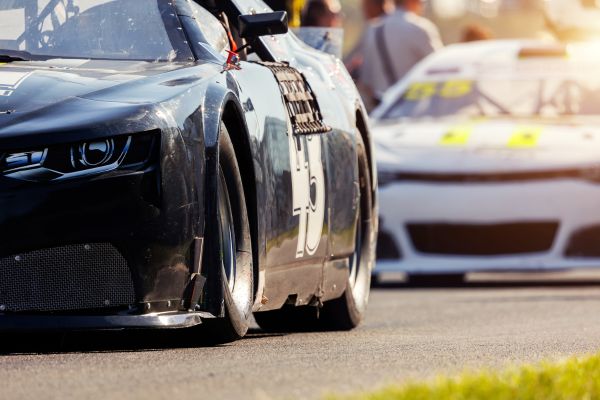The roar of engines, the smell of burning rubber, and the electrifying energy of a roaring crowd—NASCAR racing is one of the most thrilling spectacles in American motorsports. But for newcomers, understanding how NASCAR races work can feel like stepping into a high-speed world filled with complex rules, specialized gear, and unspoken strategies. This comprehensive guide breaks down the inner workings of a NASCAR race, giving fans, both old and new, a deeper appreciation of the sport’s fascinating mechanics.
Understanding the Basics of a NASCAR Race
At its core, a NASCAR race is a competition among stock cars on an oval or road course track. While that might sound simple, there’s far more beneath the surface. Knowing how NASCAR races work starts with recognizing that each race is a finely orchestrated event, combining driver skill, team coordination, and mechanical precision.
Races are typically part of a season-long series, such as the NASCAR Cup Series, which is considered the premier level of competition. Each race offers points that contribute to a driver’s standing in the championship. But it’s not just about finishing first. Factors such as stage finishes, laps led, and even penalties play a significant role in determining how the race impacts a driver’s season.
The Structure and Format of NASCAR Races
One of the most critical elements in learning how NASCAR races work is understanding their structure. A standard race is divided into three stages, a format introduced to encourage aggressive racing and reward consistent performance. These stages vary in length depending on the track but always follow the same basic concept. The first two stages end with caution flags, giving drivers a chance to pit and strategize, while the final stage leads to the finish line.
Each stage awards points to the top ten finishers, with the winner receiving the most. These stage points can be crucial in securing a spot in the playoffs later in the season. The final stage winner earns the bulk of the points, and if they manage to finish first overall, they may automatically qualify for the postseason. This layered point system ensures that every lap counts and every decision on the track matters.
The Role of Pit Stops and Strategy
To fully grasp how NASCAR races work, it’s important to appreciate the pivotal role of pit stops. These brief but critical moments allow teams to refuel, change tires, and make mechanical adjustments. A well-executed pit stop can shave seconds off a lap time and even determine the outcome of a race.
Pit strategy varies depending on tire wear, fuel consumption, and track conditions. For instance, on shorter tracks where tire degradation is high, teams might pit more frequently. On longer, faster tracks, conserving fuel and staying out longer can be advantageous. Spotters, crew chiefs, and drivers must work in perfect harmony, often making split-second decisions that can either make or break their race.
The Tracks and Racing Environment
A deep dive into how NASCAR races work wouldn’t be complete without discussing the diversity of tracks. NASCAR races are held on a variety of track types, from short tracks like Bristol Motor Speedway to superspeedways like Daytona and Talladega, and even road courses like Circuit of The Americas.
Each track presents unique challenges. For example, superspeedways require drafting and pack racing techniques, where cars run in tight groups to reduce aerodynamic drag. Meanwhile, road courses demand precision braking and shifting, testing a driver’s technical skill. Weather conditions, track surface, and elevation changes also contribute to the ever-changing dynamics of a race.
The Importance of Safety and Technology
Safety plays an essential role in how NASCAR races work today. Over the years, the sport has evolved significantly, with innovations aimed at protecting drivers and teams. Modern stock cars are equipped with reinforced roll cages, energy-absorbing foam, and HANS devices to prevent neck injuries.
Moreover, NASCAR enforces strict regulations on car design and performance to ensure a level playing field. All vehicles are inspected thoroughly before and after races. Technology such as GPS tracking, in-car cameras, and real-time telemetry provides teams with valuable data to improve performance and safety simultaneously.
The Gear That Powers the Race
When discussing how NASCAR races work, the gear used by drivers and teams deserves special mention. Drivers wear fire-resistant suits, gloves, and shoes, along with helmets outfitted with communication systems that allow them to stay connected with their crew.
Behind the scenes, the pit crew is armed with specialized tools for high-speed tire changes, jacks, and fueling rigs. Every piece of equipment is optimized for speed and efficiency, as even a fraction of a second saved in the pits can alter a race’s outcome. Meanwhile, the garage area becomes a hub of engineering and mechanical expertise, as teams fine-tune their cars for maximum performance.
The Strategy Behind Winning a NASCAR Race
Victory in a NASCAR race is rarely about raw speed alone. Strategic planning plays a monumental role in deciding outcomes. Drivers must consider tire wear, fuel levels, track position, and even how aggressively to race their competitors. Crew chiefs analyze data constantly, adjusting strategies in real time to adapt to changing conditions on the track.
Sometimes, the winning move might be a risky pit call during a caution flag, or choosing to stay out while others pit. Other times, it might come down to drafting behind a teammate to slingshot ahead during the final laps. In this way, understanding how NASCAR races work means acknowledging the mix of courage, intellect, and instinct that defines success on race day.
The Role of Fans and the Cultural Impact of NASCAR
Any conversation about how NASCAR races work would be incomplete without recognizing the fans. NASCAR enjoys a passionate fan base that spans generations and regions. From tailgating in the infield to collecting die-cast models and wearing team colors, fan engagement is a cornerstone of the sport’s identity.
NASCAR has also carved out a significant cultural presence. It is not just a sport; it’s a lifestyle. Families attend races together, communities rally around local drivers, and millions tune in to watch the drama unfold on television. This cultural fabric adds richness to the experience of understanding the sport from both a technical and emotional perspective.
Conclusion: The Heartbeat of American Racing
In unraveling how NASCAR races work, one discovers a thrilling blend of athleticism, engineering, and strategy. It’s a sport where milliseconds matter, teamwork is essential, and every lap tells a story. From the precision of the pit crew to the daring moves on the track, each race showcases a masterclass in high-speed performance.
Whether you’re a lifelong fan or just discovering the sport, understanding how NASCAR races work deepens your appreciation for what unfolds every race weekend. It’s more than just fast cars on a looped track—it’s a finely tuned symphony of speed, science, and human determination.







